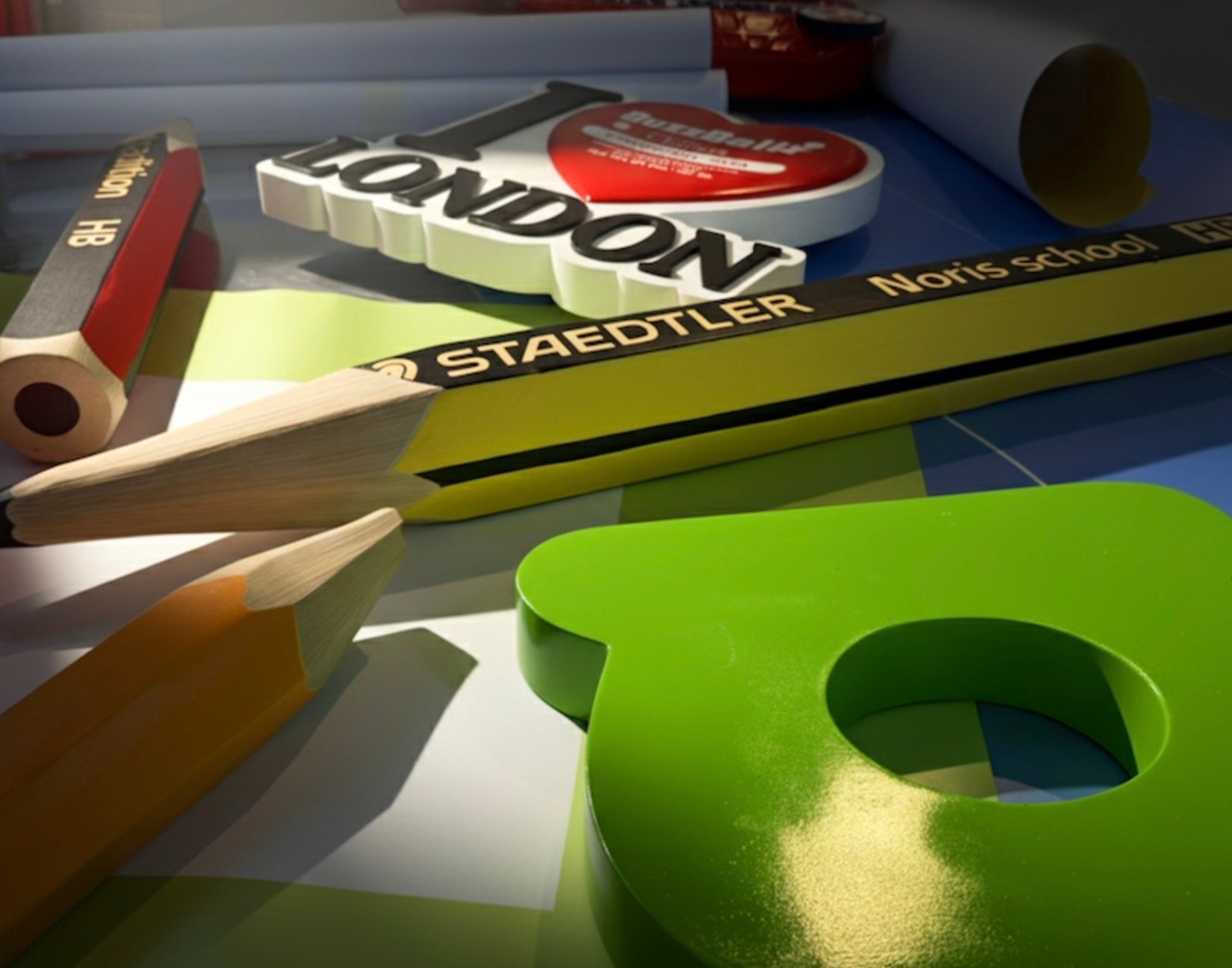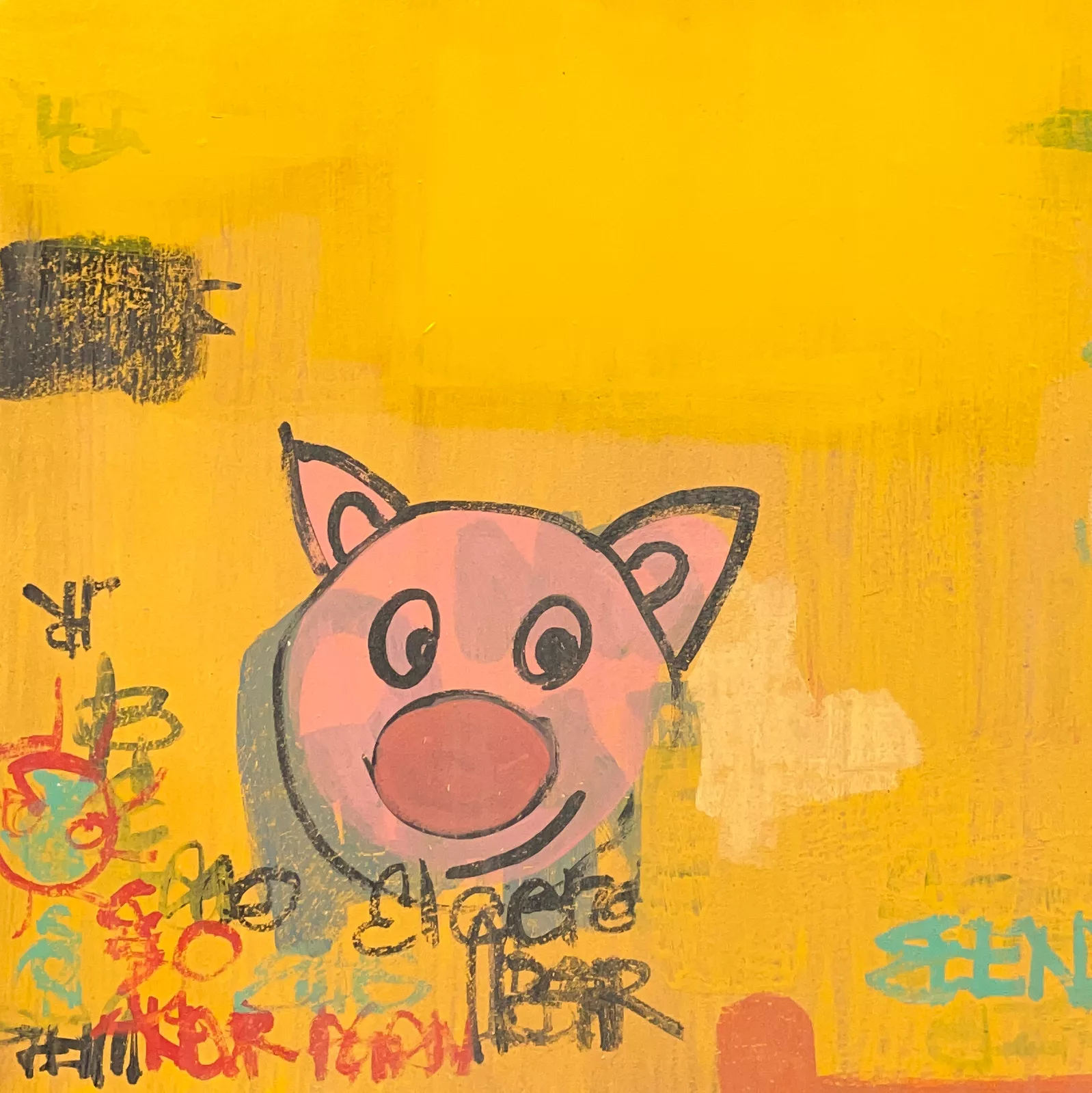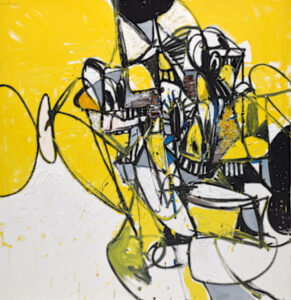(2021)
In the labyrinthine lineage of contemporary art, few figures are as emblematic of graffiti’s ascension into critical and institutional legitimacy as John “Crash” Matos. Emerging from the bustling, blighted subways of 1970s New York, CRASH carried aerosol dreams into the hallowed halls of galleries and museums, heralding a new era wherein street art was no longer marginalized but magnified. His work became a dialogue between rebellion and recognition, between fleeting urban spectacle and the permanence of canvas.
In his 2021 piece Untitled (Hot Pink Letters), Matos revisits his roots while simultaneously demonstrating the sophisticated evolution of his visual language. It is a work that resists easy categorization—caught somewhere between nostalgia and reinvention, exuberance and discipline, street energy and studio contemplation.
The Context of CRASH
To understand Untitled (Hot Pink Letters), one must first understand the man behind the tag. Born John Matos in the Bronx in 1961, CRASH began spray-painting trains at the precocious age of 13. By the late 1970s, his vibrant tags and murals had become icons of New York’s graffiti movement, a visual manifestation of the city’s social fractures and creative ferment.
Unlike many of his contemporaries who remained strictly within the realm of unsanctioned street art, CRASH was instrumental in bridging the gap between public space and gallery space. His 1980 landmark exhibition “Graffiti Art Success for America” at Fashion MODA in the South Bronx served as a crucible for many future legends of the genre, propelling graffiti into the broader cultural conversation.
CRASH’s stylistic approach has always been characterized by kinetic abstraction, comic book inflections, bold typographic gestures, and a palette that refuses to whisper. His work, over the decades, has retained the spirit of urban immediacy while absorbing the compositional rigor traditionally reserved for fine art.
In Untitled (Hot Pink Letters), all these threads are not only visible—they are vibrantly magnified.
Materiality and Medium: Spray Paint and Shaped Canvas
Spray paint, CRASH’s weapon of choice since adolescence, is a medium inherently tied to movement, gesture, and improvisation. It is an art form that resists the slow, deliberate processes of traditional painting, privileging instead the quick snap of the wrist, the intuitive mapping of space, the layering of color that captures urgency.
In Untitled (Hot Pink Letters), CRASH deploys spray paint with masterful control. The pigments—especially the dominant hot pink—are saturated and clean, resisting the bleeding and uncontrolled drips often associated with early graffiti aesthetics. Here, the medium’s innate volatility is not suppressed but disciplined, transformed into something intentional without losing its vitality.
Equally notable is CRASH’s choice of a shaped canvas. Eschewing the conventional rectangle, the canvas itself bends and curves, taking on a dynamic, almost sculptural form. This decision is not a mere aesthetic flourish—it reflects graffiti’s original context, where artists adapted their compositions to the irregular surfaces of subway cars, building facades, and public walls. By shaping the canvas, CRASH recalls the organic unpredictability of urban architecture while also asserting the artwork’s objecthood in the gallery space.
The shaped canvas does something else too: it defies the frame. Like graffiti sprawling over the official boundaries of a cityscape, Untitled (Hot Pink Letters) refuses confinement, expanding physically and symbolically beyond the traditional limitations of fine art.
The Color and Composition: A Semiotic Riot
At first glance, the painting is a riot of color, with hot pink dominating the eye, accented by electric bursts of white, black, and perhaps subtle gradients of purple and blue. Pink—long relegated to the periphery of “serious” color theory—is here elevated to a color of aggressive vitality. It is playful, yes, but also powerful, undermining centuries of coded gender connotations and reclaiming pink as a color of unrestrained expression.
The composition swirls with bold, exaggerated letterforms—an homage to the graffiti tradition of stylized typography. Yet, these are not necessarily letters that resolve into words. They are semiotic rather than linguistic; symbols of identity and assertion rather than carriers of direct meaning. The act of writing, the performance of the letter, becomes itself the message.
In this sense, Untitled (Hot Pink Letters) harks back to semiotic theories of language and representation—Saussure’s ideas of the signifier and the signified. CRASH’s forms are signifiers severed from fixed meaning, free-floating in an aesthetic play that invites interpretation without dictating it.
The energy of the composition is centrifugal: forms radiate outward, pushing against the shaped borders of the canvas. Negative space is handled with delicacy, allowing the dense clusters of color and line to breathe. The eye is never trapped; it is pulled, propelled, looped back around—a visual rhythm that mimics the urban pulse.
Cultural Resonance: Street DNA in a White Cube World
By 2021, street art had become a globally sanctioned, highly commercialized phenomenon. Artists like Banksy, Shepard Fairey, and KAWS owed much to trailblazers like CRASH who fought to legitimize spray paint as a serious medium.
However, CRASH’s Untitled (Hot Pink Letters) is not a commodification of street art so much as a reassertion of its original spirit. It is graffiti not merely translated into a gallery context, but transformed without betrayal. The shaped canvas, the exuberant typography, the insurgent color choice—all preserve the DNA of the street while engaging with the formal concerns of abstract expressionism, pop art, and even conceptualism.
In this way, CRASH’s work continues to operate as a site of tension: between institutional acceptance and rebellious origins, between aesthetic rigor and spontaneous creation, between personal history and collective urban identity.
There’s also an undercurrent of nostalgia—not as regression, but as reclamation. In a world where street art can be instantly Instagrammed and commodified, CRASH returns to the raw visual language that first electrified New York’s trains and rooftops. Untitled (Hot Pink Letters) pulses with that original heartbeat, undiluted.
The Artist’s Hand: Presence and Performance
In an era increasingly dominated by digital reproduction and AI-generated imagery, the physicality of CRASH’s technique stands out. Every spray, every outline, every shading decision bears the unmistakable signature of the artist’s body in motion. It is a record of presence, of a moment lived through hand, wrist, and breath.
The work is, in a profound sense, performative. To create it, CRASH had to negotiate with the unpredictable nature of spray paint, the contours of the shaped canvas, the choreography of gesture and control. Each curve of color, each clash of hue, testifies to an action, an improvisation rooted in decades of mastery.
This emphasis on the hand is no small matter. In a world saturated by virtual experiences, Untitled (Hot Pink Letters) asserts the irreplaceable value of the analog, the tactile, the human.
The Hustle
John “Crash” Matos has never stopped evolving. Across decades, across continents, he has remained a vital force not by abandoning his origins but by refining them, amplifying them, recontextualizing them. Untitled (Hot Pink Letters) is not merely a nostalgic nod to the graffiti of the past; it is an articulation of what that spirit can become when transposed into the complexities of contemporary art practice.
In its kinetic composition, audacious color, shaped architecture, and fearless embrace of semiotic play, the work offers a powerful reminder: street art was never just about rebellion. It was always about imagination, about carving new possibilities into the surfaces of the everyday world.
In CRASH’s hands, even hot pink becomes a battleground, a celebration, a manifesto.
A letter written not to explain, but to electrify.
No comments yet.








